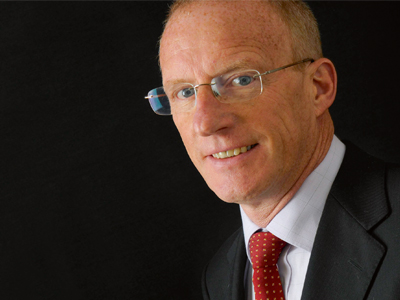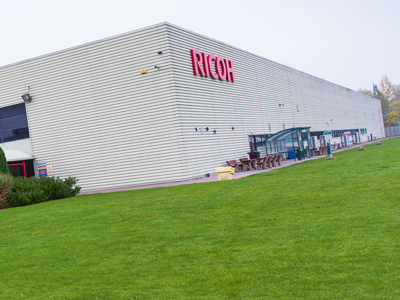Ricoh’s European production printing business has taken off since it opened a Customer Experience Centre in Telford last year, and that is no coincidence, writes Andy Knaggs.
Drupa is a word that is going to increasingly pop up in the industry’s conversations and, no doubt, in the pages of this magazine, before we get to the Düsseldorf Messe in May/June next year. Mention of it finds Peter Williams, executive vice president for the Production Printing Business Group at Ricoh Europe, in reflective mood. It is by no means Ricoh’s first as a big name in production digital printing (that was arguably in 2008), but there is a sense that the market sees the company differently now, certainly since the tie up with Heidelberg for its Ricoh Pro models.
‘We have to reflect that we are now mainstream, but still a fresh alternative,’ is how Mr Williams puts it. That aside, he does not give much away, merely adding that the company ‘wants to take a broad range of kit, including industrial’.
He was, however, willing and able to talk about a range of other subjects or projects that Ricoh is involved in, starting with the difference that the company’s Customer Experience Centre (CEC) in Telford, formally opened as such in November last year at the New Dawn event, has made to its customers and its own prospects in Europe.

Peter Williams, executive vice president for the Production Printing Business Group at Ricoh Europe
‘I think it has made a significant difference,’ he said. ‘Production print has had a huge increase in revenues year on year, and some of that was New Dawn and taking customers there that we had not met before, or not to the depth that we needed. But also, the fact that we did not have something like the CEC in Europe gave us a lack of credibility and follow through. We had that in Boulder (Colorado) but the distance was a negative as much as a benefit: to have to fly there created some seeds of doubt about our ability to function the supply chain.
‘As we moved more into commercial graphics applications, we were coming second, even though we were as good technically as our competitors, and part of it was about our ability to service those relationships at the point of sale. The CEC ticks that box; we have the proper facilities within to support customers’ needs. That’s a real benefit for high volume cut sheet systems like the 9100.’
He pointed out that the CEC is ‘not just a demo centre’; it’s a factory too, and it also includes the inkjet laboratory. Europe is the largest market for Ricoh inkjet heads and Peter Williams is running that business.
At that New Dawn event, visitors saw for the first time the new flagship production presses, the Ricoh Pro C9100 and C7100 (which has the fifth station for white and clear toner), as well as the inkjet VC60000. The C9100 and C7100, he said, have ‘energised’ Heidelberg, which sells them as the Linoprint CP and CV respectively.
‘They are much more in their sweet spot, and they have announced their new controller, which is a genuine joint development. We have optimised their technology and resource and ours. Heidelberg have changed a lot and digital is really on their agenda. They have visibility of our whole development cycle and they have contributed to it.’
While the 7100 with its ability to produce added-value applications was a new area for Ricoh, it was selling to a familiar customer base. With the 9100 however, this is a totally new market segment for the company, according to Mr Williams: one which he categorises as ‘old iGens’. ‘We’re doing what they are doing today but much more efficiently. Come drupa, I think that will be very interesting,’ he said.
The inkjet VC60000 is steadily gaining customers in Europe, but none, at the time of writing, announced in the UK. What is exciting for Ricoh is that new applications are becoming possible because, according to Mr Williams, the quality threshold has been breached: offset and inkjet can now be combined in the same catalogue with no significant loss of quality in the personalised parts.
Finally, Mr Williams discussed 3D printing, which Ricoh already offers in Japan, and is starting to get involved with in Europe, through third party devices. In the early stages, Mr Williams said he expects the education sector to be most interested in this, with its worth to production print customers less clearly defined. What seems certain though is that Ricoh will be more heavily involved. ‘We are being drawn into that space, and we are learning a lot about the applications to help our current customers nurture the business. Publicly, we’ve not announced that we are developing our own product, but it does not make sense unless we do. We are putting a lot of components in.’





